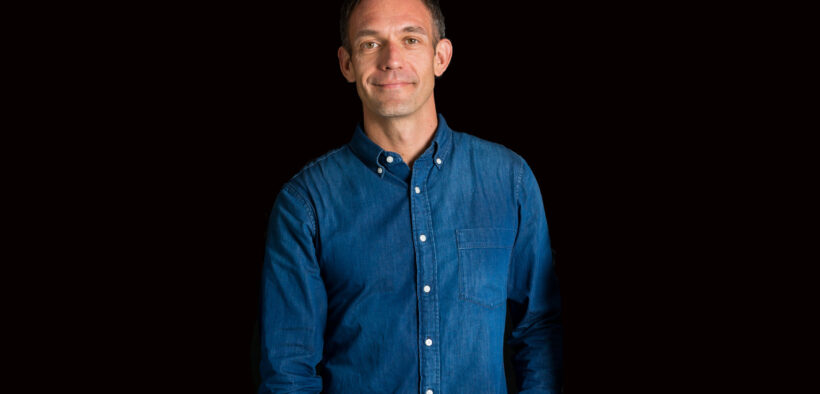Share

The ‘hopeful monster’ theory in biology suggests that evolutionary changes can occur in abrupt leaps, allowing organisms to survive and changing their lineage forever. This controversial idea of macroevolution goes against the belief that evolution is a gradual process of microevolutions.
Communications agency Magnum & Co. recently underwent its own evolution, relaunching as Hopeful Monsters. Self-described as a “challenger agency for challenger-minded brands”, Hopeful Monsters has a refreshed ambition to help brands affect radical change in their categories.
The agency has been founded to help clients lead and influence culture, something managing partner Carl Moggridge believes has been “misappropriated” by the advertising industry. Marketing caught up with Moggridge to find out more about how Hopeful Monsters hopes to redefine culture in marketing.
Marketing Mag: You’re passionate about the topic of culture and say that this word has been misappropriated by the advertising industry. What do you mean by that?
Carl Moggridge: It’s a bold statement to make but it’s true. When you think about culture, what comes to mind, how would you define it? It’s a tricky one.
There are over 150 definitions of the word in the English language and we throw it around to describe anything from the arts to the latest cool things young people are doing or suffering from, such as FOMO.
Given we’re an industry that over-indexes in its use and the fact we’re a little loose in how we use it, it isn’t a surprise serious marketers roll their eyes every time someone says the ‘c-word’.
For most brands, culture isn’t a serious business. It’s a fluffy and vague concept because that’s how we treat it, even though it’s the biggest influence on human behaviour – probably bigger than Byron Sharp.
MM: How does the industry currently view culture?
CM: There isn’t a brand in the world whose future isn’t reliant on understanding or influencing culture. The best and most effective brands we admire, as marketers and consumers, do this.
Yes, how we invest in media is important. Yes, marketing science is helpful. But for an industry where changes in culture impact a brand, we don’t spend much time really understanding it. We’re far too focused on ploughing through the various advertising methods, frameworks, processes and rules.
At the end of the day, people don’t really care about brands, they care about their own problems and themselves. It isn’t always about big existential stuff either. Like climate change or the myriad issues, brands are jumping on. It’s everyday stuff, like not getting shot playing video games when snacking.
The majority of marketing communications do not do this. The general convention is for brands to simply tell people what they want them to hear. Chasing them down an abstract funnel, crossing off problems flagged in a brand tracker.
MM: How should the marketing industry define culture?
CM: The word culture is loaded with baggage, however, the most practical definition of culture is: “the shared values, attitudes and behaviour of a group of people“.
When you view culture with this definition, it becomes useful. By understanding people and what makes them tick, you have a far better chance of influencing these attributes.
MM: What are some examples of when brands have influenced culture, rather than reflected it back?
CM: Apart from our work with Converse, one of my all-time favourite examples is from outdoor retailer, REI, whose mission is to get people outside.
On Black Friday – traditionally a day dedicated to shopping indoors – REI chose not to open its stores on the biggest shopping day of the year and actually paid its staff to take the day off.
They announced they were closed for the day and encouraged people to #optoutside. Other retailers joined their movement by closing for the day and state parks even opened for free to help people spend the day outside.
They understood that their customers and staff don’t want to be stuck inside for the day. They’d used the power of their people’s insights to start a movement.
MM: How have marketing science and digital metrics affected marketers’ approach to culture?
The stark reality is, a lot of hardcore marketing work gets in the way of understanding the culture of a category: from market segmentation to analytics, sales funnel analysis, media investment analysis, brand tracking, econometrics, ad testing and the application of marketing science, to name a few.
For everything this gives us, such as keeping us on the straight and narrow, stopping us from doing silly things, and ensuring we’re efficient with our spend, it has probably taken an important thing away. Our imagination and deep understanding of people are worryingly diminishing every day. We tend to have the answers before we’ve really understood anything at all.
That isn’t to suggest we should dismiss it, we just shouldn’t always use reason to deliver creativity.
MM: How does Hopeful Monster plan to help brands influence culture?
CM: We believe culture is a serious business and it’s at the heart of everything we do at Hopeful Monsters. In our humble opinion, there is no force on human behaviour bigger than culture.
At the end of the day, marketing communications is about understanding people. Communicating with them and through them. Yet our industry continues to make it unnecessarily complicated and increasingly detached from people.
Ultimately, a rebalancing of the adtech-obsessed, hyper-rationalised way of marketing is needed, at a time when its effectiveness is on the decline.
Brands should not only leverage it more, but a better business case needs to be made for it. We might not have a fancy pants regression analysis chart, but saying our behaviour is not disproportionately influenced by culture, is like saying the world is flat.
We specialise in culture – the biggest influence on human behaviour – and when a brand affects the culture of a category, there’s a big commercial upside.











